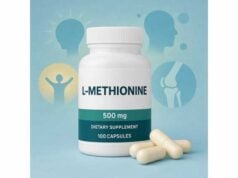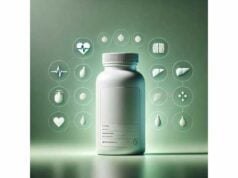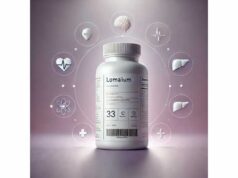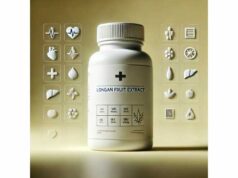
Known as purple loosestrife, Lythrum salicaria is a wetland plant with a long history in European folk and official medicine for soothing acute diarrhea, calming inflamed mucous membranes, and supporting skin healing. Today, interest is returning thanks to modern analyses that spotlight its dense polyphenol profile—especially ellagitannins such as vescalagin and castalagin—and focused lab studies that link these compounds to antimicrobial, astringent, and barrier-supporting actions in the gut. Although large, placebo-controlled clinical trials are limited, the traditional astringent use, the pharmacology, and early preclinical findings point to a practical niche: short-term support for loose stools and irritated tissues, paired with adequate fluids and medical evaluation of red-flag symptoms. This guide explains how Lythrum works, where it plausibly helps (and where it does not), how to select a preparation, sensible dosing windows, and safety rules—so you can decide, with your clinician’s input, if it fits your situation.
Key Insights
- Most plausible use is short-term support for acute diarrhea and irritated mucosa via astringent, antimicrobial, and barrier-supporting effects.
- Typical adult intake ranges: 2–4 g dried herb per infusion up to 3 times daily, or 1–2 mL tincture (1:5) up to 3 times daily for ≤7–10 days.
- Tannin-rich extracts can reduce absorption of iron and some medicines; separate by 2–3 hours and limit continuous use.
- Avoid during pregnancy and breastfeeding, in chronic constipation, iron-deficiency anemia without supervision, and in children unless a clinician advises.
Table of Contents
- What is Lythrum salicaria and how it works
- Does it help? Uses and benefits
- How to use: forms, preparation, and dosage
- Who should avoid and common mistakes
- Safety, side effects, and interactions
- Evidence: what studies show
What is Lythrum salicaria and how it works
Lythrum salicaria (purple loosestrife) is a perennial of the Lythraceae family, native to Europe and western Asia and now widespread in wetlands of North America. Herbal materials typically use the aerial parts (herba) harvested during flowering. In several European pharmacopoeias, “Lythri herba” denotes this dried material, reflecting long-standing use for diarrhea, dysentery, mouth and throat inflammation, and minor skin wounds.
Key constituents. Modern profiling highlights two dominant groups:
- C-glycosidic ellagitannins (e.g., vescalagin, castalagin, and the dimeric salicarinins A and B). These large, tannin-like molecules readily bind proteins on contact.
- C-glycosyl flavonoids (e.g., vitexin, orientin, isoorientin) and related phenolic acids.
Why tannins matter. Tannins tighten (“astringe”) superficial tissues by binding extracellular proteins. In the gut, this can reduce secretions, slow fluid loss, and form a protective film over irritated mucosa—useful in short-term diarrhea. The same protein-binding also explains two practical caveats: potential binding of dietary iron and the ability to complex with some drugs, reducing their absorption if taken together.
Proposed mechanisms aligned to traditional uses.
- Barrier support: In vitro intestinal models show Lythrum ellagitannins can promote tight-junction protein expression (e.g., claudin-4) and speed monolayer formation, consistent with mucosal integrity support.
- Antimicrobial pressure: Extracts have inhibited growth and adhesion of enteropathogenic E. coli in lab systems—one of several contributors to the plant’s traditional antidiarrheal reputation.
- Local anti-inflammatory/antioxidant tone: Phenolics in Lythrum scavenge radicals and moderate inflammatory signaling in cell and animal models, which may ease mucosal irritation and surface inflammation.
What it is not. Lythrum is not a substitute for rehydration therapy, antibiotics when indicated, or evaluation of persistent or severe symptoms. It’s a supportive, short-course astringent herb that can help mild, self-limited diarrhea and irritated mucosa while you address fluids, electrolytes, and underlying causes.
Botanical note. Outside of medicine, Lythrum is famous—infamous, in North America—as a vigorous wetland species. That status affects ecological management, not the safety profile of pharmacy-grade herb. As always, use verified, cultivated sources rather than wild-harvesting from sensitive habitats.
Does it help? Uses and benefits
Most plausible benefit: short-term diarrhea support. The best-aligned use, supported by traditional practice and modern lab data, is acute, uncomplicated diarrhea in adults. The astringent protein-binding action reduces intestinal secretions and dampens irritation, while antimicrobial effects may lower pathogen adhesion in the small intestine. In practical terms, people often report fewer trips to the bathroom, firmer stools, and less cramping within 24–48 hours, provided they also maintain oral rehydration and rest.
Mouth and throat care (topical). Gargles or mouth rinses made from cooled Lythrum infusions can soothe inflamed mucosa—for instance, after dental procedures or during minor pharyngitis—thanks to the same film-forming tannins. These uses are local, short-term, and spit out rather than swallowed.
Skin applications. Traditional external applications include compresses for weeping eczema, minor abrasions, or hemorrhoids. The goal is surface drying, calming, and barrier support. Here, Lythrum is an adjunct to evidence-based dermatologic care, not a replacement.
Where enthusiasm should be modest. You’ll find claims for metabolic, endocrine, or broad anti-inflammatory benefits. While animal or cell studies explore these areas, human clinical data are sparse. If your goals include glycemic control, weight management, or systemic inflammation, prioritize therapies with stronger human evidence and use Lythrum, if at all, locally or for brief gut support.
Who might notice the most benefit.
- Adults with sudden, mild viral or diet-related diarrhea who are otherwise healthy.
- Travelers with acute loose stools (when safe self-care criteria are met).
- Individuals with sensitive mouths/throats needing a short-term astringent rinse.
When to skip or escalate care immediately.
- High fever, bloody stools, severe abdominal pain, signs of dehydration (dizziness, dark urine, confusion), more than 48 hours without improvement, or immunocompromise—seek medical evaluation.
- Children, pregnant or breastfeeding individuals, and older adults with comorbidities should consult a clinician first.
- Chronic diarrhea or recurrent symptoms warrant medical workup; do not mask them with prolonged astringent use.
Bottom line. Lythrum fits a narrow, well-defined niche: short courses to help calm the gut or irritated mucosa, not a long-term systemic supplement. When you respect that niche—and pair it with oral rehydration—its traditional value aligns with modern mechanism.
How to use: forms, preparation, and dosage
Common forms
- Dried herb (loose or in tea bags). Best for infusions and topical rinses/soaks.
- Tincture / liquid extract. Typically 1:5 in 40–60% ethanol; check labels for ratio and solvent.
- Standardized capsules. Less common; look for identification of aerial parts and, if possible, ellagitannin content.
Preparation and dosing (adult, general guidance—follow label directions and clinician advice)
- Infusion for diarrhea: Use 2–4 g dried herb per 250 mL hot water. Cover and steep 15–20 minutes; strain. Take one cup up to three times daily for no more than 7–10 days. Taste will be strongly astringent; a slice of ginger or a squeeze of lemon after cooling can improve palatability.
- Tincture (1:5): Take 1–2 mL up to three times daily (total 3–6 mL/day) for ≤7–10 days. Place drops in a small amount of water.
- Topical mouth/throat rinse: Prepare infusion as above, allow to cool fully, then gargle or swish for 30–60 seconds, 2–4 times daily, and spit out.
- Skin compress: Soak clean gauze in a cooled infusion, apply to the area for 10–15 minutes, 1–3 times daily for 2–5 days as needed.
Timing, duration, and step-down
- Start with the lower end of the dose range for the first 1–2 doses, especially if you’re tannin-sensitive (nausea/fullness).
- If stool begins to normalize, reduce to twice daily the next day.
- Stop once stools are consistently formed; do not continue “just in case.”
- Do not exceed 10 consecutive days without clinician review; longer use raises the chance of nutrient interactions and constipation.
Hydration and diet pairing
- Combine Lythrum with oral rehydration (water plus electrolytes).
- Use a simple diet while symptomatic: bananas, rice, applesauce, toast (or equivalent gentle foods), plain yogurt if tolerated.
- Avoid alcohol, very fatty foods, and excess caffeine during the episode.
Quality checklist
- Species and part listed as Lythrum salicaria, herba (aerial parts).
- Source transparency (cultivated vs. wildcrafted), lot number, and expiration date.
- Ideally, third-party testing for identity and contaminants (microbials, heavy metals).
- For tinctures, presence of extraction ratio and solvent; for capsules, details on extract equivalence.
Storage
- Keep dried herb and capsules cool, dry, and dark.
- Store tinctures tightly sealed, away from heat and light.
- Discard products that smell musty, appear discolored, or are past expiry.
Who should avoid and common mistakes
Avoid or get medical advice first if you:
- Are pregnant or breastfeeding (insufficient safety data; tannins may affect nutrient absorption).
- Have iron-deficiency anemia or low ferritin—tannins can reduce non-heme iron absorption; correct the deficiency first or use only under supervision with careful spacing from iron therapy.
- Live with chronic constipation—astringents can worsen it.
- Are <18 years old—use only with pediatric clinician guidance.
- Take multiple medications with narrow therapeutic windows (e.g., thyroid hormone, digoxin, certain anticonvulsants)—separate doses and seek pharmacist/clinician input.
Common mistakes (and better options)
- Using Lythrum as a long-term daily supplement.
Better: Reserve for acute, short courses; rely on diet, hydration, and medical evaluation for persistent issues. - Taking it at the same time as iron or key medicines.
Better: Separate by 2–3 hours to reduce binding and absorption interference. - Ignoring red-flag symptoms (fever, blood, dehydration).
Better: Set clear stop/seek-care points before starting self-care. - Assuming any “purple loosestrife” product is interchangeable.
Better: Verify species, plant part, preparation, and brand consistency. - Over-concentrating teas to “speed results.”
Better: Stay within 2–4 g/250 mL; too-strong preparations risk nausea and constipation without added benefit. - Using as a primary antimicrobial for suspected bacterial gastroenteritis.
Better: Use oral rehydration and seek care; adjunct herbs do not replace indicated antibiotics.
Decision aid (one-minute check)
- Are your symptoms mild, new, and without red flags?
- Can you maintain oral fluids/electrolytes?
- Will you use Lythrum ≤7–10 days, spaced from key meds and iron?
- Do you have a plan to stop if no improvement within 48 hours?
If you can say yes to each, a short Lythrum trial may be reasonable while you monitor closely.
Safety, side effects, and interactions
Typical tolerability. Short-course use is generally well tolerated. The most common reactions are related to tannins:
- Gastrointestinal: a feeling of fullness, mild nausea, or constipation, especially with strong infusions or high doses. Reducing dose and taking with a small snack often helps.
- Taste: marked astringency; consider flavor adjustments after cooling (e.g., lemon slice).
Potential interactions
- Iron supplements and non-heme iron in foods. Tannins can form insoluble complexes; separate by 2–3 hours.
- Oral medications. The same protein-binding and complexation can reduce absorption of certain medicines. As a rule, leave a 2–3 hour window on either side of prescriptions, especially for thyroid hormone, antibiotics, and anticonvulsants.
- Probiotics. No direct conflict, but take at different times to avoid theoretical binding.
When to stop immediately
- Worsening symptoms after 24 hours of use.
- New fever, bloody stools, severe abdominal pain, signs of dehydration, or confusion.
- Allergic reaction (rash, itching, swelling); rare, but discontinue and seek care if suspected.
Special populations
- Pregnancy/breastfeeding: Insufficient high-quality safety data; avoid.
- Older adults with multiple medications: Higher interaction risk; involve a clinician and keep courses brief.
- Chronic GI disease (IBD, IBS-D): Lythrum may temporarily firm stools, but flare management requires clinician guidance; do not self-treat flares with astringents alone.
Quality and contamination
- Choose reputable suppliers using identity testing and microbial standards. Wetland plants can accumulate contaminants if poorly sourced; cultivated, tested material is preferred.
Environmental caution
- In many regions, purple loosestrife is invasive in wetlands. This is an ecological issue, not a human-safety signal; nevertheless, support cultivated sources rather than wild harvesting to protect habitats.
Evidence: what studies show
Chemistry and pharmacology reviews. Modern reviews of Lythrum salicaria confirm the dominance of ellagitannins (vescalagin, castalagin, salicarinins) and C-glycosyl flavonoids, tying these to astringent, antioxidant, and antimicrobial actions that match traditional indications for the gut and mucosa. Collectively, this supports a mechanistic rationale for short-term antidiarrheal use.
Gut-focused mechanistic data. In intestinal epithelial models, Lythrum inhibited growth and adhesion of enteropathogenic E. coli and stimulated tight-junction protein (e.g., claudin-4) and monolayer formation. These effects speak directly to two clinical goals in acute diarrhea: reduce pathogen pressure and stabilize barrier function.
Antioxidant and anti-inflammatory signals. Extracts have demonstrated free-radical scavenging, lipid peroxidation inhibition, and anti-edema activity in animals—properties that may soothe irritated tissues but do not on their own confirm clinical efficacy.
Safety/toxicity snapshots. Recent work characterizing phenolic profiles and in vivo toxicity in non-mammalian and rodent systems generally supports a benign safety profile at customary doses, while reminding clinicians to respect dose, duration, and preparation differences.
Clinical evidence gaps. Despite promising lab and historical data, large randomized trials in humans for acute diarrhea are lacking. Small or observational studies, including veterinary and agricultural contexts, hint at antidiarrheal potential, but they are not definitive. This is why the recommended role remains short-term adjunct, not a stand-alone therapy for severe or persistent conditions.
Practical interpretation. Use the strengths—rapid astringency, local antimicrobial action, barrier support—for brief episodes, while staying vigilant about hydration, drug spacing, and stop points that trigger medical review. For long-term GI issues, pursue a diagnosis, dietary strategies (soluble fiber, low-FODMAP where appropriate), and evidence-based therapies; consider Lythrum only as an intermittent tool.
References
- Lythrum salicaria L.-Underestimated medicinal plant from European traditional medicine. A review 2015 (Review)
- Lythrum salicaria Ellagitannins Stimulate IPEC-J2 Cells Monolayer Formation and Inhibit Enteropathogenic Escherichia coli Growth and Adhesion 2020
- Antioxidant, anti-inflammatory, anti-nociceptive activities and composition of Lythrum salicaria L. extracts 2007
- Assessment of Purple Loosestrife (Lythrum salicaria L.) Extracts from Wild Flora of Transylvania: Phenolic Profile, Antioxidant Activity, In Vivo Toxicity, and Gene Expression Variegation Studies 2025
- Therapeutic Potential of Lythrum salicaria L. Ethanol Extract in Experimental Rat Models of Streptozotocin-Induced Diabetes Mellitus and Letrozole-Induced Polycystic Ovary Syndrome 2025
Disclaimer
This article is for educational purposes and does not replace personalized medical advice, diagnosis, or treatment. If you have severe, persistent, or recurrent symptoms—especially fever, blood in stool, dehydration, or significant abdominal pain—seek prompt medical care. Discuss any new herb with your clinician, particularly if you are pregnant, breastfeeding, elderly, taking multiple medications, or have chronic conditions. If you found this guide useful, please consider sharing it on Facebook, X (formerly Twitter), or your preferred platform, and follow us for future evidence-guided updates. Your support helps us continue producing high-quality content.










